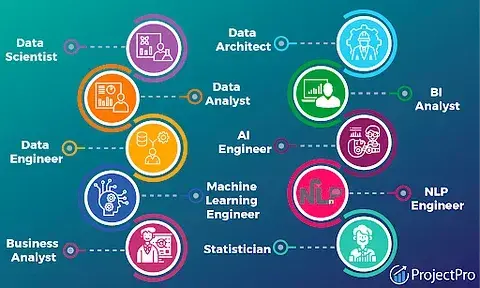The Power of Operational Excellence.
- Luycer Bosire

- Jul 16, 2024
- 3 min read
Updated: Oct 31, 2024

I recently got promoted and moved from Finance to Operations, more specifically Operational Excellence. Of course, when the offer was extended to me to manage this department, it was lost on me what Operational Excellence was all about, the job description, scope, technical requirements and mandate.
I had supported the team that led the department before from a finance angle, providing financial data and linking them to various players since I had the resources as a Finance Business Partner. Therefore, when the position became vacant, it is no surprise that I was considered.
A majority of persons have asked me time and again what Operational Excellence is about. It was sheer coincidence that the daughter of the late Francis Ogolla, the head of the Kenyan Defense Forces, came to the limelight after her father's sudden demise right when I got this offer. She heads Operational Excellence at Google. I used her LinkedIn profile, insights and all as I dived deeper into understanding the scope and mandate of Operational Excellence.
In the world of business, the pursuit of excellence is a journey without a final destination. One crucial aspect that separates thriving companies from the rest is their commitment to operational excellence. This strategic approach focuses on continuously improving processes, reducing waste, and enhancing efficiency at every level of an organization.

Operational excellence is not merely a goal but a mindset that permeates an organization's culture. It requires a relentless dedication to refining practices, streamlining operations, and delivering value to customers. By optimizing processes and eliminating inefficiencies, businesses can achieve higher productivity, lower/optimized costs, and improve customer satisfaction.
The Pillars of Operational Excellence
Continuous Improvement: Embracing a culture of continuous improvement ensures that businesses are always seeking better ways to operate. By encouraging employees to identify opportunities for enhancement and efficiency gains, organizations can stay ahead of the curve. Companies can acquaint themselves with the like Lean, Six Sigma and Kaizen to eliminate waste, reduce variability, and improve quality
Standardization: Establishing standardized processes and best practices across all departments fosters consistency and reliability in operations. This uniformity reduces errors, minimizes variation, and improves overall performance.
Employee Empowerment: Empowered employees are at the heart of operational excellence. By fostering a supportive and inclusive work environment, businesses can tap into their employees' creativity, problem-solving skills, and innovative ideas.
Data-Driven Decision Making: Utilizing data analytics and insights to drive decision-making processes enables businesses to make informed choices based on facts rather than assumptions. This data-driven approach leads to more precise strategies and better outcomes.
Design Thinking: Design thinking and Operational excellence are a synergy between innovation and efficiency. The two complement each other and can be leveraged to maximize impact.
Achieving Operational Excellence
To achieve operational excellence, businesses must prioritize the three c's: collaboration, communication, and a customer-centric approach. By aligning strategy with execution, fostering a culture of accountability, and investing in employee development, organizations can create a solid foundation for sustained success.
Embracing a Culture of Excellence
Operational excellence is not a one-time project but an ongoing commitment to improvement and innovation. By embedding the principles of operational excellence into their DNA, businesses can adapt to changing market dynamics, mitigate risks, and seize new opportunities for growth.
Remember, excellence is not a destination; it's a journey.
Before commencing the role, I had the privilege of participating in a webinar hosted by Beverly Davis, the founder of Davis Financial Services, where she explained how Operational Excellence manifests in various departments of a company.
Financial | Culture | Enterprise | Operations |
|---|---|---|---|
Higher Sales | Increased training and employees with key skills | Closing the gap between current state and optimal performance | Fewer regulatory or compliance issues |
Cost control or reduction | Greater employee engagement | Realizing the financial value of that gap | Higher customer satisfaction |
Stronger cash flow | Enhanced accountability by team members | Reaching a level of operational excellence maturity relative to industry standards | Decreased errors and less waste in value stream |
Shorter payment cycles | Improvement in cross-department collaboration | Greater customer retention | |
Reduced receivables | Higher employee satisfaction | Higher output or productivity |
Beverly Francis - Davis Financial Services
WHY IS OPERATIONAL EXCELLENCE IMPORTANT?
Companies that practice operational excellence see 25% higher growth and 75% higher productivity.
Operational excellence can act as an organization’s competitive foundation.
Operational excellence helps you succeed in good times and bad because it impacts long-term characteristics and behaviors.
The benefits of operational excellence is a team that is more agile, strategic, efficient, and growth minded.
Beverly Francis - Davis Financial Services
In conclusion, operational excellence is the cornerstone of a successful business, enabling organizations to deliver value, drive efficiency, and outperform the competition. By embracing a culture of continuous improvement, standardization, employee empowerment, and data-driven decision-making, companies can position themselves for long-term success in an ever-evolving marketplace.





Beautifully written 👏🏿
Great article it’s spot on